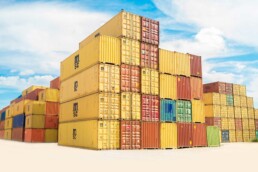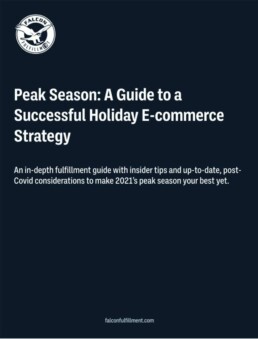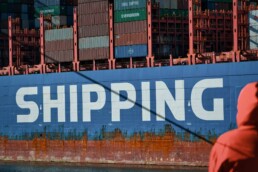FTL vs. LTL Shipping: What's the difference?
Understanding the difference between FTL vs LTL shipping and which to choose for your business.
Understanding FTL vs LTL shipping is a big part of your overall fulfillment solution. The efficient transportation of goods is the primary aspect of what makes a good supply chain. This encompasses various considerations such as selecting the mode of transportation, choosing the right carrier, and ensuring cost-effectiveness. In road transportation, two prominent models prevail: Full Truckload (FTL) and Less than Truckload (LTL). These two methods have distinct characteristics and applications, making it essential for businesses to understand the differences and select the appropriate one for their shipments.
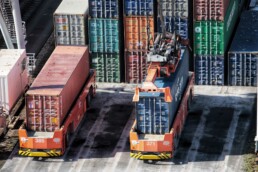
Understanding FTL and LTL
FTL, or Full Truckload shipping, is the ideal choice for transporting large shipments or goods that occupy the entire truck. This means the truck exclusively carries cargo from one company. Even if your shipment doesn’t fully utilize the truck’s capacity, you can still book the entire truck to ensure your goods travel without being mixed with other products.
On the other hand, LTL, which stands for Less than Truckload, involves one trailer carrying freight from multiple shippers, rather than a single company. LTL shipments are an excellent option for smaller businesses with fewer shipping requirements and budget constraints.
Exploring FTL and LTL Freight Shipping
FTL operates on a point-to-point distribution model. In this approach, the shipper loads their cargo onto the truck, which then travels directly to the final destination without stops. FTL is most suitable for bulk loads, shipments with special handling requirements, and more.
Conversely, LTL uses a hub-and-spoke distribution model. Smaller LTL shipments from multiple shippers are collected in a particular region and then combined onto one truck. This truck makes multiple delivery stops along the way to the final destinations.
Diving Deeper into the Differences
Several key differences set FTL and LTL shipping apart:
Cost: LTL is cost-effective when shipping a few pallets at a time, as you only pay for the space you use. FTL, however, involves booking an entire truck, which can be more expensive, especially for smaller shipments.
Transit Time: FTL offers predictable transit times since the truck carries shipments from one shipper only. In contrast, LTL shipments may have variable delivery times due to multiple stops and less fixed schedules.
Safety of Goods: LTL shipments may involve loading and unloading several times, potentially increasing the risk of damage. FTL, with its direct route, ensures the safety of goods in transit.
Advantages of FTL and LTL
Both FTL and LTL shipping offer unique advantages. LTL is ideal for cost-conscious shippers with smaller loads, while FTL guarantees on-time deliveries and suits high-value or sensitive cargo.
When to Use FTL vs LTL Shipping
The choice between FTL and LTL depends on various factors, including shipment size, weight, type, delivery time, and budget. Small businesses with budget constraints often opt for LTL, while FTL is preferred for high-value and time-sensitive shipments.
Selecting a 3PL for FTL and LTL Service
When selecting a 3PL (Third-Party Logistics) provider for FTL or LTL services, consider the following:
- Expertise and experience in handling your specific goods or shipments.
- Balancing cost and delivery time.
- Visibility and technology platforms for shipment management.
Beginner’s Guide to Third-Party Logistics (3PL)
The world of e-commerce is always changing, therefore understanding the roll of Third-Party Logistics is integral to keeping up. In light of this our beginner’s guide to third-party logistics (3PL) will delve into the essential aspects, offering insights into fulfillment services, warehousing, and much more.
Read More…
Understanding the differences between Full Truckload (FTL) and Less than Truckload (LTL) shipping methods is essential for efficient transportation planning. Your choice should align with your specific shipment needs, and selecting the right 3PL partner can further streamline your logistics operations. Whether you opt for FTL, LTL, or other shipping options, a well-informed decision ensures cost-effective and reliable transportation for your business.
Understanding the difference of these transportation methods is paramount to your success. Let Falcon help you with your fulfillment and we will help you succeed .
Let’s Talk!
E-commerce Shipping Damage Control and Protecting Shipments
Controlling e-commerce shipping damage control and protecting your shipments
E-commerce shipping damage control is a significant concern for online businesses. If you’ve ever wondered how to maintain e-commerce shipping damage control, we’ve got you covered. Let’s delve into the strategies that can save your products from the perils of the shipping process.

Appropriate Box Sizing
Selecting the right box size is the first step in ensuring your e-commerce shipping damage control strategy works. A snug fit minimizes the risk of damage during transit. Learn more about optimizing your packaging size for e-commerce shipping damage control.
Appropriate Package Filler
The right type and quantity of filler material are vital for e-commerce shipping damage control. Fragile items should be cushioned with materials like bubble wrap, while sturdier goods can be safely nestled together with plastic or paper. Proper filler and package size reduce damage risk in your e-commerce shipping process.
Proper Handling Procedures
In-house handling errors often lead to damaged packages. Ensure an organized warehouse, avoid stacking pallets haphazardly, and follow safety measures to prevent accidents and damaged goods. Learn how organization reduces the risk of e-commerce shipping damage.
Manufacturer Damages
Defective products from manufacturers can be problematic for your e-commerce shipping damage control efforts. Perform quality checks upon delivery to your e-commerce facility. This proactive approach helps prevent damaged items from entering your e-commerce inventory. Regular communication with your manufacturer is key to e-commerce shipping damage control.
Moisture & Heat Damage
Extreme temperatures can harm your inventory in your e-commerce shipping process. Maintain a cool and dry storage environment. Avoid exposing products to excessive heat or moisture in your e-commerce operations. Our facilities keep temperatures between 50 and 70 degrees for quality assurance in e-commerce shipping.
Pest Contagions
Prevent pests by implementing regular pest control measures in your e-commerce business. Inspect e-commerce inventory for signs of infestation and address issues promptly. Don’t let pests ruin your e-commerce products.
COVID-19 Sanitation Procedures
In today’s world, sanitation is paramount for e-commerce shipping damage control. Ensure products are sanitized before entering your e-commerce inventory. Protect your e-commerce customers and staff with these important measures.
Shipping Damage Control Via Carriers
Shipping carriers play a crucial role in ensuring product safety during transit in your e-commerce operations. While you can’t control their every move, here are some steps you can take for e-commerce shipping damage control:
Follow Packaging Guidelines
Pack e-commerce orders carefully to minimize movement and breakage. Correct box sizes and snug-fitting filler are your allies in preventing e-commerce shipping damage.
Fragile Labeling
Add “fragile” or “handle with care” labels to e-commerce packages. While not foolproof, this visual cue encourages carriers to take extra care.
Review Carrier Analytics
If e-commerce damage continues to be an issue, analyze carrier performance data. Identifying problematic carriers allows you to take corrective action.
Beginner’s Guide to Third-Party Logistics (3PL)
The world of e-commerce is always changing, therefore understanding the roll of Third-Party Logistics is integral to keeping up. In light of this our beginner’s guide to third-party logistics (3PL) will delve into the essential aspects, offering insights into fulfillment services, warehousing, and much more.
Read More…
Let Falcon Fulfillment Take the Lead in E-commerce Shipping Damage Control
Why burden yourself with damage control when you can trust Falcon Fulfillment to handle it for you? Our experts ensure your e-commerce products reach customers unscathed. Focus on growing your e-commerce business while we safeguard your e-commerce shipments.
At Falcon Fulfillment, we provide comprehensive services, from top-notch packaging to inventory management for your e-commerce business. Benefit from waste reduction, FDA-certified distribution centers, and COVID-19 sanitation measures in your e-commerce operations. Partner with us and enjoy peace of mind. With Falcon Fulfillment by your side, you can explore new horizons for your e-commerce business.
Contact us today for a free quote and consultation. We’ve got your damage control covered!
Let’s Talk!
U.S. Port Delays Continue Amid Tentative Labor Agreement
U.S. Port Delays Continue Despite Tentative Labor Agreement: Supply Chains Brace for Impact
The tentative labor agreement between the International Longshoremen’s Association (ILA) and the United States Maritime Alliance (USMX) has provided a sense of relief to some, but U.S. port delays are far from over. Even with this agreement in place, significant challenges remain for supply chains across the country. As congestion builds and vessels await clearance, logistics professionals brace for the impact on shipping and delivery, fulfillment services, and overall supply chain management.

U.S. Port Delays Affect Fulfillment Services and Logistics
Although the strike didn’t escalate to its worst-case scenario, the backlog at major U.S. ports will take weeks, if not months, to resolve. The delays have reverberated through third-party logistics (3PL) providers, fulfillment centers, and businesses relying on international shipping. Fulfillment services are expected to struggle with increased demand as inventory management and warehousing efforts are pushed to the brink.
Key ports like Los Angeles and Long Beach, responsible for a large share of inbound and outbound logistics, are experiencing significant congestion. This means that e-commerce fulfillment companies and order fulfillment solutions may need to implement flexible strategies such as cross-docking and freight consolidation to mitigate delays. Furthermore, reverse logistics and warehousing and distribution networks will face strain, impacting last-mile delivery and inventory tracking software systems.
Inventory Management and Supply Chain Optimization Strained
The ongoing U.S. port delays mean supply chains must adapt quickly to avoid complete disruption. Inventory management practices are being put to the test as bulk shipping becomes unreliable, and demand planning becomes critical for meeting customer expectations. Supply chain optimization strategies are being reevaluated to include scalable fulfillment solutions and better integration of 3PL technology solutions. These changes are particularly essential for companies offering same-day and next-day delivery, where delays could severely impact customer satisfaction.
As many companies rely on multi-channel fulfillment and vendor-managed inventory (VMI) programs, the delays are forcing businesses to prioritize orders based on available inventory and expected shipping times. Third-party logistics providers are also playing a crucial role in implementing solutions that help manage the bottlenecks in order accuracy, quality control, and return merchandise authorization (RMA) processing.
Shipping and Delivery Disruptions Across the Nation
One of the most significant impacts of the port delays is on shipping and delivery services. Freight forwarding, freight rate negotiation, and customs brokerage are all facing substantial backlogs. International shipping, particularly import/export logistics, is experiencing longer lead times and higher costs due to the congestion.
Businesses that rely heavily on fulfillment services and shipping, such as e-commerce companies, must look at alternative solutions like dropshipping or leveraging freight consolidation and shipment consolidation services. These methods could offer a temporary reprieve from the current challenges at U.S. ports, but they are far from ideal long-term solutions.
Additionally, third-party logistics companies are scrambling to secure transportation management systems (TMS) and carrier selection and management processes to streamline shipping. Warehousing and fulfillment centers are under pressure to adopt packaging optimization and kitting and assembly techniques to move inventory more efficiently while ensuring order accuracy and on-time delivery.
Warehousing and Fulfillment Centers Feel the Strain
Fulfillment centers and 3PLs across the nation are feeling the ripple effect of the port delays. As goods pile up at congested ports, these facilities must find ways to accommodate surges in inventory. For example, implementing cloud-based warehouse management systems (WMS) allows for better order tracking and management, especially when facing fulfillment cost analysis and scalability challenges.
Warehouse automation is also becoming more critical as fulfillment centers attempt to manage the increased workload without significantly slowing down. Utilizing technologies like inventory forecasting and order splitting and routing can provide some relief, but only if paired with well-executed inventory cycle counts and scalable fulfillment solutions.
With more orders being delayed or rerouted, third-party logistics providers must prioritize safety and security measures in warehousing to prevent loss or theft. Furthermore, value-added services (VAS) such as kitting, assembly, and fulfillment services that enhance order accuracy and customer satisfaction are becoming more important than ever.
Fulfillment Services and Logistics Adapt to U.S. Port Delays
As the U.S. port delays drag on, fulfillment services, third-party logistics providers, and businesses across the supply chain are bracing for a long recovery period. The ripple effect from port congestion is expected to impact order fulfillment solutions, inventory management, shipping, and delivery for months to come.
In the meantime, businesses will need to rethink their supply chain optimization strategies to include advanced warehousing and fulfillment technology. Cloud-based WMS, freight consolidation, and reverse logistics solutions are just a few of the approaches companies can take to ensure they weather the storm. Furthermore, focusing on order accuracy, scalable fulfillment solutions, and flexible fulfillment services will be essential for maintaining customer satisfaction in these challenging times.
Beginner’s Guide to Third-Party Logistics (3PL)
The world of e-commerce is always changing, therefore understanding the roll of Third-Party Logistics is integral to keeping up. In light of this our beginner’s guide to third-party logistics (3PL) will delve into the essential aspects, offering insights into fulfillment services, warehousing, and much more.
Read More…
Whether it’s dealing with last-mile delivery disruptions or managing inventory tracking software, businesses must be ready to adapt. The U.S. port delays highlight the critical role of logistics and fulfillment centers in ensuring that the supply chain keeps moving, even in the face of significant challenges. As the situation continues to evolve, supply chain professionals will need to stay ahead of the curve to minimize disruptions and maintain a competitive edge.
Have more questions or need help with your fulfillment solutions?
Let’s Talk!
Peak Season: A Guide to a Successful Holiday Ecommerce Strategy
An in-depth fulfillment guide with insider tips and up-to-date, post-Covid considerations to make 2021’s peak season your best yet.
The East Coast Port Strike Ripple Effect on U.S. Supply Chains
The East Coast Port Strike’s Ripple Effect on U.S. Supply Chains
The ongoing East Coast Port Strike is a seismic event for U.S. supply chains, with dockworkers on the East and Gulf Coasts offloading no cargo. These ports account for more than 40% of U.S. imports, and their shutdown is causing a ripple effect across industries that depend on continuous flows of goods. From retail to manufacturing, and even the healthcare sector, businesses face critical challenges in maintaining operations and meeting consumer demand. Here’s how this labor stoppage is shaking up the supply chain—and what industries must do to adapt.

Retail Industry Braces for the Worst
The East Coast Port Strike couldn’t come at a worse time for retailers. With the holiday shopping season approaching, delayed shipments are leading to concerns about inventory shortages. This is especially true for companies relying on third-party logistics (3PL) and e-commerce fulfillment services to meet increased consumer demand. The stakes are high: empty shelves during the busiest shopping months could mean significant losses, and the additional costs of redirecting goods from East Coast ports to the West Coast or other alternatives will undoubtedly be passed on to consumers.
Meanwhile, the pressure is mounting on fulfillment services. Accurate inventory management and seamless order fulfillment solutions will be crucial as retailers scramble to adjust. Supply chains are designed for efficiency, not flexibility, and with warehousing and distribution already stretched, it’s likely that many retailers will miss out on opportunities to capitalize on the season. Same-day and next-day delivery services could also be threatened as disruptions pile up. Expect delays, frustrated customers, and climbing costs as the strike continues.
Manufacturing Faces Critical Delays
The manufacturing sector is also grappling with significant disruptions. Many manufacturers rely on supply chain management systems that depend on the timely arrival of raw materials, including steel and electronics components. The East Coast Port Strike has already put a wrench in these plans. Factories operating on vendor-managed inventory (VMI) systems are particularly vulnerable, as they depend on just-in-time deliveries to keep production lines moving.
With cross-docking becoming more challenging due to port shutdowns, businesses will need to turn to alternative options like freight forwarding and bulk shipping to keep materials flowing. The costs associated with these alternatives are rising, further complicating an already strained supply chain. Moreover, manufacturers relying on warehouse automation and precise inventory forecasting now find themselves in a position where the data can’t predict what’s next. This level of uncertainty could lead to production slowdowns, increased lead times, and higher prices for consumers down the road.
To minimize the fallout, manufacturers are looking at strategies like reverse logistics and freight consolidation, but even these measures have limits when international trade is involved. The East Coast Port Strike isn’t just delaying parts; it’s stalling the entire manufacturing process, causing economic ripples that could take months or even years to fully resolve.
The Healthcare Sector’s Supply Chain Stress
In the healthcare industry, the East Coast Port Strike is more than an inconvenience—it’s a matter of public health. Pharmaceutical imports, including essential medications like insulin, pass through the affected ports. With containers sitting idle, hospitals and pharmacies face serious risks of medication shortages, which could impact patient care.
Logistics in this sector depend heavily on precise order tracking and management, and disruptions in shipping and delivery could result in delayed or missed shipments of critical supplies. Customs brokerage services, crucial for clearing pharmaceuticals and medical devices through ports, are now facing backlogs, exacerbating the delay. This puts even greater pressure on healthcare providers who rely on inventory tracking software to maintain accurate records of available products.
Furthermore, any delays in kitting and assembly for medical devices could disrupt the availability of life-saving equipment. As hospitals and care providers brace for longer wait times, the situation highlights the critical need for flexibility and contingency planning within the healthcare supply chain.
Adaptation Is Crucial
The East Coast Port Strike is forcing industries to rethink their logistics strategies. Diversifying multi-channel fulfillment options is becoming a necessity for businesses looking to stay competitive. Some are turning to air freight and alternative sea routes, though these come with their own set of challenges and increased costs. Companies with international operations are leveraging shipment consolidation and freight consolidation to reduce overhead and shipping times, but there’s only so much that can be done without access to key ports.
Investing in more robust transportation management systems (TMS) is another option. Enhanced carrier selection and management allows businesses to pivot more effectively in the face of disruption. In addition, companies that operate fulfillment centers can tap into value-added services (VAS) to meet demand and maintain service levels, despite the strike.
Many companies are now focused on scalable fulfillment solutions that can expand or contract depending on shifting demand. But the truth is that no single solution can fully mitigate the effects of the East Coast Port Strike. The complexities of today’s supply chains mean that businesses will need to deploy a combination of these strategies to survive.
Long-Term Implications
The East Coast Port Strike isn’t just a short-term disruption; its effects will likely last well beyond the resolution of the labor dispute. In the future, companies will need to reassess their logistics infrastructure and supply chain optimization strategies. Investing in 3PL technology solutions can provide more control over critical functions, such as freight rate negotiation, that are essential during times of disruption.
Companies will also need to pay more attention to order fulfillment metrics and reporting to gain real-time insights into supply chain performance. In addition, businesses should consider improving safety and security measures in warehousing to ensure they can handle future challenges with greater agility. Ensuring order accuracy and quality control in the midst of shipping delays will also be vital to maintaining customer satisfaction.
Beginner’s Guide to Third-Party Logistics (3PL)
The world of e-commerce is always changing, therefore understanding the roll of Third-Party Logistics is integral to keeping up. In light of this our beginner’s guide to third-party logistics (3PL) will delve into the essential aspects, offering insights into fulfillment services, warehousing, and much more.
Read More…
There’s no doubt that the East Coast Port Strike has already sent shockwaves through U.S. supply chains, with major implications for industries ranging from retail to healthcare. Businesses need to act decisively to minimize the impact, deploying strategies like freight consolidation, cross-docking, and enhanced TMS to maintain the flow of goods. Those that adapt quickly will be better positioned to weather this storm and future disruptions.
Wondering how the strike can effect your supply chain?
Let’s Talk!
Peak Season: A Guide to a Successful Holiday Ecommerce Strategy
An in-depth fulfillment guide with insider tips and up-to-date, post-Covid considerations to make 2021’s peak season your best yet.
E-commerce Fulfillment Strategies: Navigating Profitability
E-commerce Fulfillment Strategies 2024
E-commerce is undergoing a transformation in 2024. After experiencing remarkable growth, the industry now faces increased competition, shrinking margins, and economic uncertainties. There are many e-commerce fulfillment strategies that can help hone your edge and keep you ahead of the pack. This guide outlines some essential strategies to enhance profitability in this challenging landscape.

1. Prioritize Existing Customers
In a world where digital advertising costs are soaring, it’s essential to rethink your approach. Instead of solely chasing new customers, emphasize nurturing your existing ones. Building customer loyalty and community through exceptional customer service, gathering first-party data, and ensuring a seamless user experience across all channels can yield higher returns than constantly seeking new prospects.
2. Elevate Inventory and Fulfillment
Inventory management and fulfillment may not be flashy, but they are critical for customer satisfaction. Your customers need to know what’s in stock and expect timely deliveries. Treat inventory and fulfillment as valuable product offerings. Gain comprehensive visibility into your inventory and maintain clear communication about order status to reduce cart abandonment rates.
3. Implement Unique Engagement Features
Setting your e-commerce website apart from the competition is vital. Here are some distinctive features to consider:
- a. Conditional Content: Tailor your website content based on user preferences gathered through periodic prompts or surveys. Provide a personalized shopping experience that resonates with your customers.
- b. Human-to-Human Interactions: Offer chat and video-based assistance options to establish a more immediate connection with your customers. Real-time assistance can guide shoppers and build trust.
- c. Dynamic Video Content: Videos can be a game-changer. Use informative and entertaining videos to showcase products, address customer concerns, and facilitate the sales process. Video content significantly enhances conversion rates.
Bet on Proven Profitability Strategies
In a challenging e-commerce environment, maintaining profitability requires a strategic shift. Focus on data-driven approaches, prioritize existing customers over new ones, refine inventory management, and implement unique engagement features. These strategies will help you navigate the evolving e-commerce landscape successfully.
Beginner’s Guide to Third-Party Logistics (3PL)
The world of e-commerce is always changing, therefore understanding the roll of Third-Party Logistics is integral to keeping up. In light of this our beginner’s guide to third-party logistics (3PL) will delve into the essential aspects, offering insights into fulfillment services, warehousing, and much more.
Read More…
Feel free to contact Falcon Fulfillment for comprehensive fulfillment solutions, including warehousing, distribution, and more. Our expertise in supply chain management and order fulfillment ensures your business stays competitive in today’s dynamic e-commerce market.
Let’s Talk!
E-commerce Peak Season Fulfillment: How To Prepare
E-commerce Peak Season Fulfillment Preparation
The e-commerce industry experiences its busiest time during peak seasons, and as an online business owner, you understand the importance of seamless operations. One way to ensure a successful e-commerce peak season fulfillment strategy is by working with a trusted fulfillment company. In this blog, we’ll delve into how third-party logistics (3PL) and fulfillment services can help you prepare for the upcoming e-commerce rush.
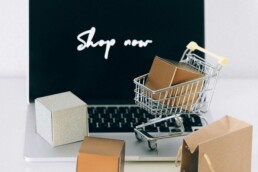
E-commerce peak season is fast approaching, and it’s crucial to be prepared. Partnering with a fulfillment company that offers a range of services can make all the difference. In this blog, we’ll explore how 3PL providers can enhance your e-commerce operations during the busiest times of the year.
The Benefits of Fulfillment Services During E-commerce Peak Season
Fulfillment services cover a wide range of crucial tasks for e-commerce businesses. These services include warehousing and distribution, order fulfillment solutions, and inventory management. By outsourcing these functions to a reliable 3PL provider, you can free up your time and resources, allowing you to focus on marketing and growing your e-commerce business.
Optimizing Shipping and Delivery
Efficient shipping and delivery are paramount during peak seasons. E-commerce fulfillment companies excel in this area, offering services such as last-mile delivery and order tracking. With their expertise, you can ensure that your customers receive their orders promptly, leading to higher satisfaction and repeat business.
Streamlining Supply Chain Management
Supply chain management is a complex but critical aspect of e-commerce. Fulfillment partners specialize in this area, optimizing processes like cross-docking, freight forwarding, and reverse logistics. Their expertise ensures that your supply chain operates smoothly, even during the peak season’s heightened demands.
Meeting Customer Expectations
During peak seasons, meeting customer expectations becomes more challenging. However, fulfillment companies excel in providing value-added services (VAS) like same-day and next-day delivery, ensuring your customers receive their orders as promised.
Supply Chain Management
3PL providers also play a significant role in supply chain management. They handle tasks such as cross-docking, freight forwarding, and even reverse logistics, ensuring a seamless flow of goods through the supply chain.
Advanced Technology Solutions
To stay competitive, e-commerce businesses need access to cutting-edge technology. Many fulfillment providers offer cloud-based warehouse management systems (WMS), transportation management systems (TMS), and inventory tracking software. These tools enable you to manage your inventory effectively and optimize order fulfillment.
Peak Season: A Guide to a Successful Holiday Ecommerce Strategy
An in-depth fulfillment guide with insider tips and up-to-date, post-Covid considerations to make 2021’s peak season your best yet.
As e-commerce peak season approaches, partnering with a reliable fulfillment company is a strategic move. They offer the expertise and resources needed to meet the demands of increased sales while maintaining customer satisfaction. Prepare for success with your chosen fulfillment partner!
By implementing these strategies and partnering with a fulfillment company that specializes in e-commerce, you can navigate the upcoming peak season with confidence, ensuring a smooth and profitable experience for both you and your customers. Don’t wait; start your preparations today!
If you’re ready to get ahead of peak season, contact us to learn more about our services.
Let’s Talk!
Streamline Your Transition to Falcon Fulfillment from Your 3PL
Transition to Falcon Fulfillment
Are you currently working with a Third-Party Logistics (3PL) provider but considering a switch? This transition can be a strategic move to enhance your supply chain management, improve order fulfillment, and ultimately boost your e-commerce success but it doesn’t come without bumps in the road. A transition to Falcon Fulfillment can help you with the fulfillment solutions you need and help you scale you business like never before. In this blog, we’ll guide you through the essential steps to smoothly shift from your current 3PL while optimizing your logistics.

1. Evaluate Your Current 3PL Services
Before making the transition, it’s crucial to assess your existing 3PL’s performance. Consider aspects like inventory management, order accuracy, delivery times, account management, and customer satisfaction. Identify pain points and areas that need improvement. If your current 3PL isn’t taking care of you, they are not taking care of your product.
2. Define Your Fulfillment Needs
Fulfillment services encompass a wide range of logistics operations, including warehousing, order fulfillment solutions, inventory management, and more. Define your specific requirements and expectations, such as delivery speed, supply chain optimization, omni-channel support, kitting, or international shipping.
3. Research Falcon Fulfillment’s Capabilities
Take a deep dive into Falcon Fulfillment’s offerings. They excel in services like inventory tracking, order tracking and management, kitting and custom programming, marketing support, account management, and scalable fulfillment solutions. Ensure they align with your needs and business goals.
4. Plan Your Transition to Falcon Fulfillment Timeline
Create a realistic timeline for the transition. Consider seasonal peaks, inventory turnover, and any potential disruptions during the switch. Falcon Fulfillment can help you strategize to minimize downtime.
5. Collaborate with Falcon Fulfillment
Engage with Falcon Fulfillment’s team early in the process. Discuss your specific requirements, such as kitting and assembly, warehouse automation, and transportation management. They can provide tailored solutions to meet your needs.
6. Implement a Cloud-Based WMS
A Cloud-Based Warehouse Management System (WMS) can significantly streamline the transition process. Falcon Fulfillment offers advanced WMS technology to ensure a smooth transition and efficient ongoing operations.
7. Monitor Progress and Metrics
Throughout the transition to Falcon Fulfillment, closely monitor key metrics such as order accuracy, on-time delivery, and inventory cycle counts. Falcon Fulfillment provides robust reporting tools to help you track your progress. Your dedicated account manager is also there to assist in understanding reports as well.
8. Scalability and Future Growth
How capable is your current partner, Choose Falcon Fulfillment for its scalable fulfillment solutions. As your business grows, they can adapt to your changing needs, ensuring a seamless and efficient supply chain.
9. Seamless Integration Services
Falcon Fulfillment offers E-commerce Integration Services, making it easier to connect your online sales channels with their system, ensuring real-time order processing and inventory synchronization.
10. Review and Optimize
After the transition is complete, conduct a thorough review of your partnership with Falcon Fulfillment. Collaborate on continuous improvement strategies, including packaging optimization, freight rate negotiation, and demand planning.
When Is It Time to Switch Your Fulfillment Provider?
Your fulfillment provider is an important partner in your business. They help you get your products to your customers quickly and efficiently, which can have a big impact on your bottom line. But what if your current fulfillment provider isn’t meeting your needs? We will help you answer the question: Is It Time for a Fulfillment Provider Switch?
Utilizing fulfillment strategies in times of economic uncertainty becomes a crucial factor for companies aiming to establish stability and drive expansion. By embracing these specialized recommendations, one can effectively address obstacles and emerge more resilient in challenging circumstances. For personalized advice on enhancing your business’s fulfillment methods, consider reaching out to the professionals at Falcon Fulfillment.
If you’re ready to start the transition or have questions, contact us to learn more about our services.
Let’s Talk!
Preventing Inventory Shrinkage in Retail: Strategies for Success
Inventory Shrinkage in Retail
Inventory shrinkage in retail is a persistent challenge, impacting profitability. This guide explores strategies to prevent “inventory shrinkage in retail” and how third-party logistics (3PL) and fulfillment services can assist in mitigating this issue.
Understanding Inventory Shrinkage in Retail
Inventory shrinkage, often due to theft, errors, or damage, can lead to significant losses for retailers. In this guide, we’ll discuss strategies to prevent “inventory shrinkage in retail” and how 3PL and fulfillment services can play a vital role.

1. Implement a Robust Inventory Management System
An advanced “inventory management system” forms the foundation of successful inventory shrinkage prevention. These systems provide real-time visibility into stock levels, aiding in the prompt detection of discrepancies.
2. Enhance Security Measures
Invest in security measures, such as surveillance cameras and access controls, to deter theft and fraud in your retail establishment. If you use a fulfillment company this security is taken care of for you.
3. Regular Audits and Cycle Counts
Frequent audits and cycle counts can help identify and rectify discrepancies in inventory levels, taking a proactive approach to prevent “inventory shrinkage in retail.”
4. Consider Vendor-Managed Inventory (VMI)
Explore “vendor-managed inventory (VMI)” solutions, where suppliers play a more active role in managing your stock. This reduces the risk of receiving incorrect or damaged goods.
5. Optimize Inventory Forecasting
Accurate inventory forecasting minimizes the risk of overstocking or understocking, reducing the chances of spoilage or damage.
6. Embrace Scalable Fulfillment Solutions
Leverage third-party logistics (3PL) and fulfillment services to streamline your supply chain, enhance “inventory management,” and reduce shrinkage risks.
7. Prioritize Order Accuracy and Quality Control
Ensure your fulfillment process is error-free, implementing stringent quality control measures to minimize errors in order fulfillment. This is another area where a fulfillment company can help by manageing inventory for you so you can focus on growing your business.
8. Utilize Data Analytics
Harness data analytics to identify patterns or anomalies in “inventory management.” Advanced analytics tools offer valuable insights into shrinkage risks.
9. Implement Inventory Tracking Software
Invest in advanced “inventory tracking software” providing real-time updates on stock movements and alerts for potential shrinkage.
10. Employee Training
Train your staff to remain vigilant about “inventory shrinkage risks in retail” and educate them on effective prevention measures.
11. Explore Customized Packaging Solutions
Consider packaging solutions that protect products from damage during transit and storage, further reducing shrinkage risks.
Partnering with a reputable 3PL provider like Falcon Fulfillment can be a game-changer in your “inventory shrinkage prevention” strategy. These services offer precise control over stock levels, secure storage, reduced order errors, advanced technology for tracking, and streamlined supply chain operations. You should be managing your product and growing your brand, not dealing with shipping. Let a professional fulfillment company share the load and help you succeed.
When Is It Time to Switch Your Fulfillment Provider?
Your fulfillment provider is an important partner in your business. They help you get your products to your customers quickly and efficiently, which can have a big impact on your bottom line. But what if your current fulfillment provider isn’t meeting your needs? We will help you answer the question: Is It Time for a Fulfillment Provider Switch?
Utilizing fulfillment strategies in times of economic uncertainty becomes a crucial factor for companies aiming to establish stability and drive expansion. By embracing these specialized recommendations, one can effectively address obstacles and emerge more resilient in challenging circumstances. For personalized advice on enhancing your business’s fulfillment methods, consider reaching out to the professionals at Falcon Fulfillment.
If you’re ready to start the transition or have questions, contact us to learn more about our services.
Let’s Talk!
5 Tips for Optimizing Your Supply Chain
5 Tips for Optimizing Your Supply Chain
As the e-commerce industry continues to grow, it is increasingly important for online businesses to optimize their supply chain. An efficient supply chain is vital to promptly meeting customer demands, ensuring customer satisfaction, and keeping your business competitive. Data reveals that 79% of brands that use supply chain optimization techniques boost their revenue. This post will define what supply chain optimization is, its benefits, and five tips for optimizing your e-commerce supply chain.
What is supply chain optimization?
Supply chain optimization is the process of improving the efficiency and effectiveness of a business’s supply chain operations. It involves analyzing the current processes and making changes to reduce costs, improve customer service, and increase overall profitability. Supply chain optimization helps businesses create more resilient and streamlined supply chains that provide a competitive advantage. It also helps them identify new opportunities and develop strategies to capitalize on them. Supply chain optimization can be both operational and strategic changes.
Benefits of supply chain optimization
Optimizing your supply chain has significant benefits for your business. Frequently, companies experience reduced costs, better efficiency, and improved customer satisfaction. This can lead to increased profits, greater efficiency, and reduced risk. You can also benefit from increased scalability and improved responsiveness to changes in demand. Additionally, optimizing your supply chain can lead to enhanced product quality, faster delivery times, and improved customer service. Optimizing your supply chain can help you maximize your efficiency and profitability while reducing overhead costs.
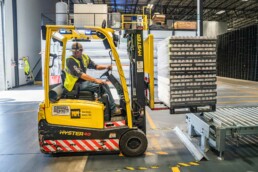
1. Leverage technology
Thirty-four percent of supply chain leaders say that adapting to new technology is the most important strategic change supply chain organizations will face five years from now.
One of the most important aspects of optimizing your e-commerce supply chain is leveraging existing and future technology. Technology, such as supply chain software, can help you streamline and automate processes, reduce manual errors, and provide visibility into your supply chain. Additionally, it can help you identify areas for improvement and make more informed decisions. Here are some of the technologies to consider when optimizing your supply chain.
- Automation – Current software programs can automate communication between manufacturers, vendors, and customers. Emerging technologies like AI and machine learning allow businesses to integrate multiple systems in e-commerce warehousing, transportation, and personalization.
- Autonomous Things – Robots, unmanned delivery vehicles, drones, and next-generation robots can augment repetitive manual tasks with greater efficiency and safety than their human counterparts. Expect to see more “bots” implemented into the supply chain, especially as staffing continues to be a significant issue for many e-commerce companies.
- Enhanced Security – Cyber attacks, data harvesting, malware, ransomware, and other security threats are a challenge not to be overlooked. Safeguarding your business through enhanced security measures will keep the supply chain running smoothly.
- Improved Forecasting – Many tech-forward companies have invested in automated inventory tracking, among other software that improves forecasting. This improves order cycles and informs better operations decisions.
2. Establish clear communication with suppliers.
Clear and open communication is crucial to an optimized supply chain. Transparent communication between the retailer and all suppliers and manufacturers ensures orders are received and fulfilled quickly. Technology can help share information seamlessly, but it is still essential to develop protocols for all events in the supply chain. This becomes especially important if you work with multiple suppliers.
3. Build a resilient supply chain.
A resilient supply chain is critical for any business and requires careful planning and execution. The first step is to identify potential risks and create a plan of action to mitigate them. This includes evaluating suppliers, ensuring alternate sources in case one is disrupted, and forecasting to anticipate future demand. Additionally, businesses should focus on good inventory management to ensure timely delivery and take measures to strengthen logistics and transportation networks. Another way to improve supply chain resilience is by partnering with a solid 3PL.
4. Negotiate and renegotiate.
In order to optimize your supply chain, it is necessary to lower costs and maximize profit margins. Therefore, it is essential to negotiate with suppliers, manufacturers, and other vendors regularly. Plan to evaluate costs, contracts, and service agreements on an ongoing basis to ensure you receive optimal pricing.
5. Outsource business operations unrelated to core competencies.
The most successful companies focus on what they are good at and outsource other business operations to competent partners. While it may be prudent to manage most operations in-house initially, it isn’t scalable at a certain point. The main areas of supply chain optimization that benefit from outsourcing are order fulfillment, procurement, transportation, reverse logistics, and even customer service. Most of these value-added services are offered by a dependable 3PL fulfillment company.
Beginner’s Guide to Third-Party Logistics (3PL)
The world of e-commerce is always changing, therefore understanding the roll of Third-Party Logistics is integral to keeping up. In light of this our beginner’s guide to third-party logistics (3PL) will delve into the essential aspects, offering insights into fulfillment services, warehousing, and much more.
Read More…
By following these tips, you can optimize your e-commerce supply chain and ensure that you’re meeting customer demands promptly. Leveraging technology, establishing clear communication, building supply chain resiliency, negotiating, and outsourcing business operations are all critical steps to take when optimizing your supply chain.
If you want to know how partnering with Falcon Fulfillment can help you with your supply chain needs, get in touch today.
Let’s Talk!
6 Ways to Improve Order Picking Accuracy
6 Ways to Improve Picking Accuracy
Consumers increasingly rely on e-commerce to meet the demands of their busy lives, expecting accurate orders. While a delayed order can be a setback, an entirely inaccurate one is more than a frustrating inconvenience. A single picking error not only erodes customer trust but also diminishes profitability. Furthermore, picking errors can significantly impact warehouse productivity, resulting in a loss of revenue and profitability. Hence, companies must prioritize order accuracy. Here are six ways to enhance picking accuracy and maintain customer satisfaction.
The Importance of Order Picking Accuracy
In simple terms, the order-picking process involves retrieving items purchased by the customer from inventory and preparing them for shipment. It stands out as one of the most labor-intensive tasks in a warehouse or fulfillment center. Order picking typically constitutes 55% of warehouse operating costs and involves a substantial human touch, leading to the potential for human error. Additionally, the process demands a significant amount of strenuous physical labor, resulting in a slow and potentially hazardous operation. This underscores the importance of consistently enhancing order-picking accuracy and efficiency for the success of a business.

6 Ways to Improve Picking Accuracy
Analyze Product Velocity
Product velocity refers to the quantity and frequency of the SKU picked over a designated time. Evaluating product velocity ensures that commonly ordered items are strategically located within easy access to picking areas. Some best practices when considering the velocity of a SKU include:
- Determine fast, medium, and slow movers and slot them accordingly (e.g., place slow movers further from picking areas).
- Examine and evaluate picking days, averages vs. optimal.
- Store high-velocity SKUs in a readily accessible location for easy selection and replenishment.
- Determine if individual SKU velocities are affected by seasons or promotions.
Properly analyzing product velocity allows you to arrange warehouse storage in the most efficient manner, improving picking accuracy and order fulfillment cycle times.
Strategically organizing inventory
Enhancing picking accuracy is significantly influenced by strategically organizing inventory. Warehouses often adopt an organizational approach by creating zones where similar items are grouped together. This method is particularly useful when implementing zone-based and batch-picking methods. Another effective strategy is slotting, which entails strategically placing cases for easy access and replenishment. Regardless of the chosen inventory storage method, organization is crucial to maximizing pickers’ chances of selecting the correct items.

Establish picking routes
Creating clear picking routes or establishing a streamlined traffic flow within the warehouse allows pickers to fulfill orders seamlessly. This minimizes backtracking through aisles, reducing both costs and time. Overcrowded aisles are also alleviated by the implementation of well-defined picking routes.
Maintain accurate inventory data
The effectiveness of organized picking routes hinges on accurate inventory data. An organized and efficiently routed picker may face challenges if the selected product is misplaced or out of stock. To enhance picking accuracy, it is imperative to maintain a precise foundation of real-time inventory storage, quantities, and locations. The integration of an automated inventory management system can dramatically improve inventory data.
Analyze error data
Continuous improvement relies on tracking and analyzing picking accuracy data. Regularly reviewing this data provides insights into when and where problems occur, offering operational clarity about staff suitability for specific tasks. Additionally, it serves as a tool to incentivize pickers for improved order accuracy. Lastly, systematic or procedural issues become apparent when thoroughly examining error data.
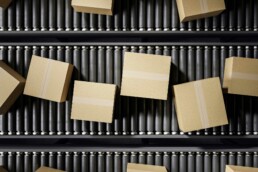
Use technology
Embracing technology, whether transitioning to a fully automated warehouse system run by robots or adopting incremental technological improvements, can significantly elevate picking accuracy. Numerous proven solutions exist to reduce human error and enhance accuracy. Consider the following technology solutions:
Radio frequency scanning devices
Utilizing lightweight, hand-held scanners for accurate barcode reading confirms the correct product selection. These devices streamline the process by eliminating the need to read labels, improving both speed and accuracy.
Visual logistics
Going beyond traditional barcode or QR code methods, visual logistics incorporates images of the product on the scanner and/or visual bin locations.
Pick to light
PTL is an order-picking technology that uses lights and LEDs on racks or shelves to indicate pick locations, guiding pickers through their tasks. It has proven to increase picking efficiency compared to RF or paper pick lists.
Voice-directed picking
Voice picking, a hands-free and eyes-free system, guides pickers through tasks by providing verbal instructions. This system integrates headsets and advanced speech recognition software with the system of record (WMS, ERP, Inventory System).
Conveyor systems
The sophistication of conveyor systems varies, with sortation conveyors being particularly useful in improving order accuracy. Systems that allow pickers to stay in a single location as items are brought directly to them are also beneficial. The choice of the best conveyor system depends on factors like warehouse size, layout, and product diversity.
Whether you decide to implement one or all six ways to enhance picking accuracy, they embody a crucial element of successful fulfillment. Customers expect to receive the exact product they order. Business owners and warehouse managers acknowledge the importance of picking accuracy in ensuring customer satisfaction, but consistently upholding this standard can pose a challenge. If your business prioritizes picking accuracy but aims to ease the responsibility of maintaining the highest standards, let Falcon Fulfillment assist you. We uphold a 99.9% accuracy rating and are enthusiastic about ensuring that your customers consistently get what they’ve paid for. Contact one of our agents today.
Want to partner with someone who has fulfillment dialed in?
Let’s Talk!



